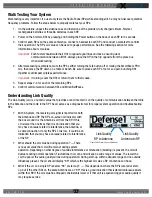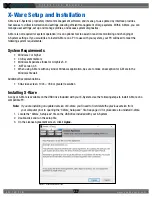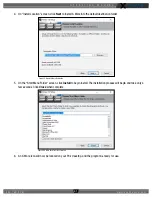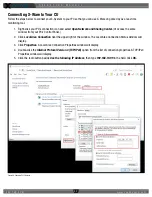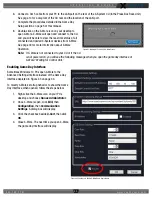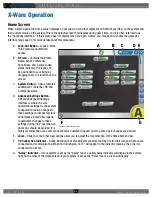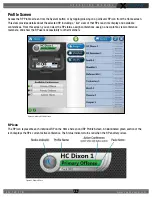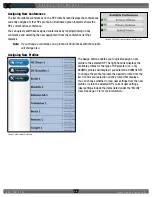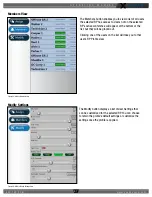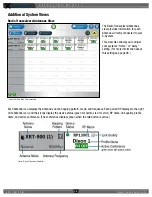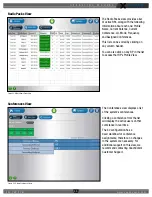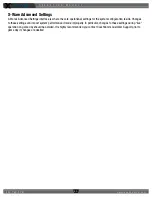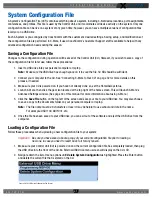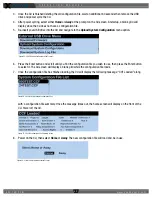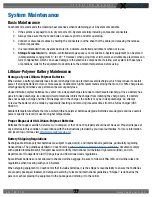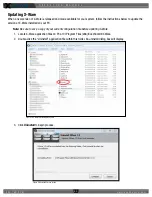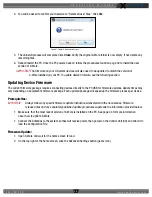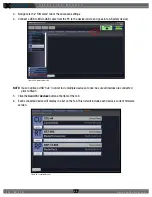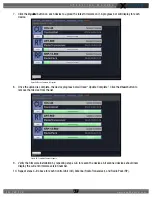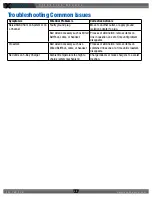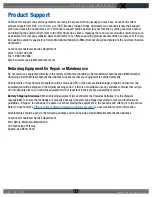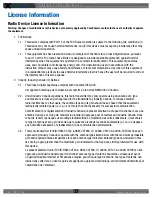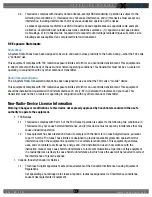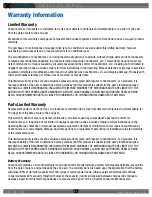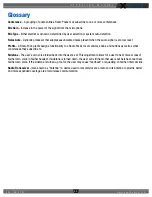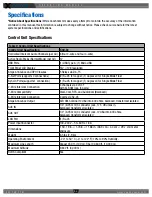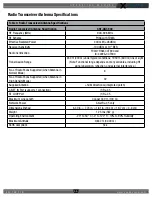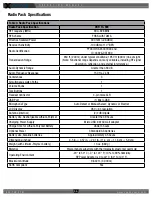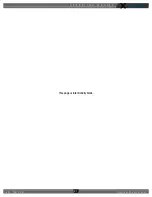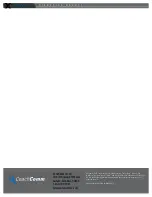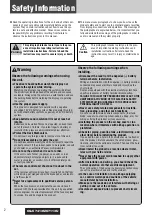
O P E R A T I N G M A N U A L
8 0 0 . 7 4 9 . 2 7 6 1
w w w . c o a c h c o m m . c o m
4 3
System Maintenance
Basic Maintenance
CoachComm recommends the following best practices when maintaining your X-System components.
1. If the system is exposed to rain, dry all parts of X-System carefully, including cables and connectors.
2. Always make sure that nuts and bolts are secure prior to and after operating.
3. Connect or disconnect cables by holding the connectors (not the sheath of the cable) and pressing the release
button if applicable.
4. It is recommended that X-System be stored in a climate-controlled environment when not in use.
5.
Storage Temperature:
If a climate-controlled storage space is not available, X-System equipment can be stored
in temperatures ranging from 5° to 130° F. However, when going from cold to warm environments, electronics can
form condensation, which can cause damage to the electronic components. If storing your system in these types
of conditions, wait for the equipment to acclimate to the ambient temperature before using.
Lithium-Polymer Battery Maintenance
Storage of your Lithium-Polymer Batteries
When stored, a battery gradually loses its overall charge time due to internal self-discharge, which may reduce its overall
power. If storing batteries for two or more weeks, CoachComm highly recommends storing them at a 40–50% charge level,
which generally minimizes any permanent power capacity loss.
Unused lithium-polymer batteries may enter into a deep discharge state due to internal self-discharge. Once a battery has
gone into deep discharge, its onboard circuit protections inhibit the charger from initiating the charge cycle. If a battery
does not accept a charge and the LED displays red in the charger, the battery may be in deep discharge. An attempt
to revive the battery can be made by repeatedly inserting and removing it several times from the 5-Bay charger (CBT-
5BAY-01).
Ambient temperature affects the rate at which lithium-polymer batteries degrade. Batteries also degrade and lose overall
power capacity if stored (or used) at higher temperatures.
Proper Disposal of Old Lithium-Polymer Batteries
Batteries that appear swollen, deformed, or damaged, or that do not fit properly should never be used. Properly dispose of
any batteries in this condition in accordance with the instructions provided by your local authorities. For more information
and local drop-off sites, visit
http://www.call2recycle.org/
.
Battery Shipping Regulations
Rechargeable lithium-polymer batteries are subject to special U.S. and International regulations, particularly regarding
transportation. The guidelines detailed in CoachComm’s
Lithium-Polymer Battery Shipping Guidelines
document comply
with updated International Air Transport Association (IATA), International Civil Aviation Organization (ICAO), and U.S.
Department of Transportation (DOT) Dangerous and Hazardous Goods regulations.
Spare lithium batteries are not allowed in checked airline baggage. Be sure to follow all FAA, IATA, and airline rules and
regulations when traveling with your X-System.
When shipping equipment to CoachComm that includes batteries, it is the shipper’s responsibility to ensure that batteries
are properly packaged, labeled, and shipped according to local and international guidelines. “Shipper” is defined as the
person or school placing the equipment in the package and offering it to the carrier.

